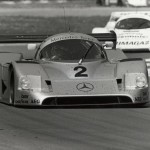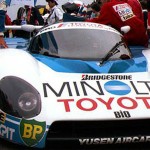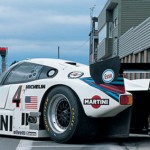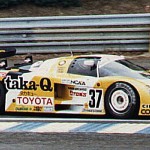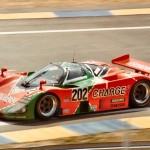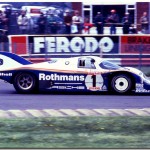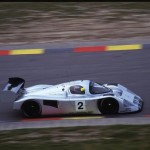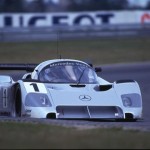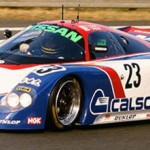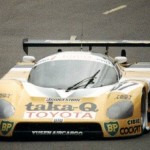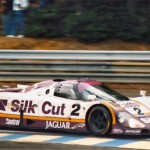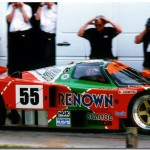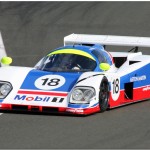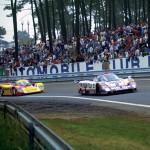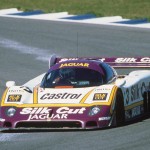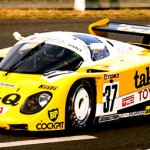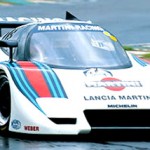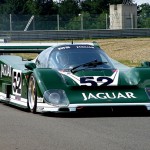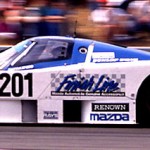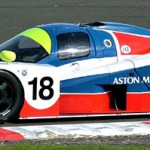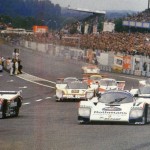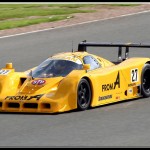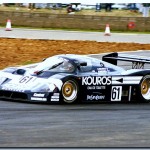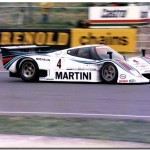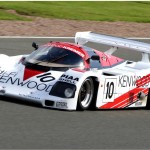Group C Racing – That’s Entertainment!

If you were to describe your perfect motor racing series, I’d wager that you would want parity of performance yet with enough flexibility to allow the world’s most established manufacturers to demonstrate ingenious levels of engineering. Throw in a truckload of truly world-class drivers and of course some majestic circuits for them to race on and you’ve just about got it all together, right? In a nutshell, you’d want Group C.
This was a decade when Group C ruled the earth. If you thought the soundtrack to the Eighties was a welter of synthesisers and drum machines; think again. Actually – just for a second – don’t. Get yourself in the mood with some Eurythmics, Human League and Duran Duran. Weep for the days when melody was king and Simon Cowell had yet to give every pop star mid-Atlantic accents and forced vibrato.
I digress: the pop music may have been fabulous, but it paled in comparison with the clarion call of Jaguar’s V12, the Ferrari V8 wail of the Lancias and the rumbling malice of the Mercedes. For rice rocket lovers nothing can match the shrieky yowling of a Mazda rotary, but ultimately the soundtrack is dominated by that concerto of deep, urgent grunt twinned with turbo flutter-and-whistle from the master of Group C racing: Porsche.
This phenomenal category emerged from the morass of the 1970s, when regulations for the World Sportscar Championship appeared to change whenever there was a mild breeze outside the FIA. A new formula was decided upon where fuel economy was paramount. Now that sounds about as riveting as a weekend weeding the flowerbeds, but what happened was something close to alchemy.
In effect the FIA removed virtually every technical restriction except for one: the cars could weigh no less than 800kg and store a maximum fuel capacity of 100 litres. Beyond that they were only limited to a maximum of five refuelling stops within a 1000 kilometre distance. For the boffins in engine management, aerodynamics, metallurgy and advanced composite construction this was like every Christmas arriving at once.
Small wonder, therefore, that in its prime the World Sportscar Championship boasted Aston Martin, Jaguar, Lancia, Mazda, Mercedes-Benz, Nissan, Peugeot, Porsche and Toyota. That it pulled in more than 50,000 spectators to every race and brought upwards of half a million to Le Mans. This was motor racing on a grand scale, creating a grand spectacle – and all without a big fence around the paddock, super-egos or even ferocious budgets.
Just look at how any privateer teams won races and filled the points positions: the likes of Joest, Brun, Kremer and Fitzpatrick added to the competition at every level. Marvel at the Aston Martin Nimrod programme, which was put together using gaffer tape and goodwill when there were barely two pennies to rub together. Event the mighty TWR Jaguars were cobbled together using as much road car technology as there was brilliance from the likes of Tony Southgate and Ross Brawn.
Yet this was big business. As a sponsorship magnet Group C’s appeal went far beyond tobacco and the ubiquitous petrochemical firms. It was cool, it was inexpensive and it drew in fashion labels, chinzy drinks firms and serious businesses. With the money came talent – hence it was no surprise to find the biggest names in the Eighties tackling Group C races. Stalwarts like Derek Bell, Jacky Ickx, Hans Stuck, Bob Wolleck, Klaus Ludwig, Jochen Mass and Henri Pescarolo found their careers entering an Indian summer – all the more so when they were joined by Formula One men.
Ricardo Patrese led the Lancia squad. Stefan Bellof was world champion for Porsche. Keke Rosberg drove the last top-line race on the old Nurburgring at the wheel of a Richard Lloyd Porsche, then Ayrton Senna got to grips with the new Nurburgring at the wheel of a similar Joest car. Martin Brundle and Derek Warwick both won the championship. Jean Alesi stormed Le Mans – as did the ‘Brit Pack’ of Julian Bailey, Mark Blundell and Johnny Herbert. Oh, and then Mercedes produced some snotty kids called Wendlinger, Frentzen… and Schumacher.
Small wonder that Bernie Ecclestone didn’t like Group C, badmouthing it as a ‘manufacturers’ championship’ rather than a pure racing series. Funnily enough, when Max Mosley got himself into the FIA presidency in 1991 he installed Bernie as his vice-president for marketing all the FIA championships – and within 12 months Group C racing was dead. Most of the manufacturers, meanwhile, found themselves being wooed towards Formula One.
Like Concorde and the Apollo rockets, Group C racing took us further and faster than we could dream of attempting today. The races live on in DVD form, and recently the cars have begun to reappear after long years in the wilderness. Tellingly at last year’s Le Mans, the fastest of the oil-burning Peugeots was fully 10mph slower than the 20-year-old Sauber-Mercedes that starred in the ‘classic’ warm-up race. Those were the days, indeed.
Images: Antsphoto

